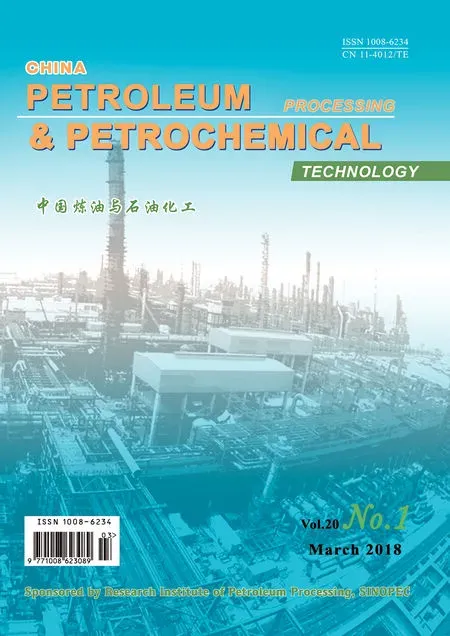“The Combination Technology Involving Solvent Extraction-Selective HDS” Reaches the Internationally Adanced Level
Recently the project―“The development and application of combination technology involving solvent extraction-selective HDS processes” jointly undertaken by the SINOPEC RIPP, Yangzi Petrochemical Co., and Luoyang Engineering Co., Ltd.―has passed the appraisal organized by the Science and Technology Division of the Sinopec Corp. This technology upon processing the FCC naphtha with high sulfur and high olefin contents to produce gasoline meeting the requirements of the National V and VI standards on gasoline sulfur content is an important technology for manufacture of low-sulfur clean gasoline, which can bring about many advantages, incliuding low loss of RON rating, more stable operation, low investment cost, and good techno-economic indicators.
In order to protect the environment, China according to the standard on gasoline quality (GB 17930―2016) has stipulated that starting January 1, 2017 the National V standard on gasoline quality shall come into force, which demands that the sulfur content in gasoline should not exceed 10 wppm. At present, the techniques for reducing sulfur content in gasoline mainly cover the adsorptive desulfurization and the hydrodesulfurization processes.However, when the previously available processes are adopted to process FCC naphtha feedstock with high sulfur and ole fin contents to yield gasoline meeting the requirements of National V and VI standards on gasoline quality,an excessively high octane loss would be experienced.
The combination technology involving solvent extraction and selective hydrodesulfurization (HDS), which has been developed by the SINOPEC RIPP through understanding the specific features of the composition of FCC naphtha in the molecular level, aims to treat different sulfur compounds in FCC naphtha with diversified means through organically integrating such processes as alkaline extraction, solvent extraction and selective HDS in order to pertinently remove each sort of sulfides, leading to a significant reduction of the octane loss in the course of selective HDS of naphtha and enhanced technical options that can offer powerful technical support to the processing of high-sulfur and high-olefin FCC naphtha in order to stabilize the production of gasoline components meeting the National V and VI standards on gasoline quality.
The said combimation technology was for the first time applied in commercial scale at the Qingjiang Petrochemical Company (QPC). The commercail application results have revealed that upon processing the FCC naphtha feed(containing 418―460 μg/g of sulfur and 27.6%―27.9% of ole fins) produced at QPC, the sulfur content in the whole gasoline fraction was less than 10 wppm, and the RON loss was equal to 1.0―1.3 units, with the gasoline yield exceeding 99.9% coupled with the stable operation of the processing unit. In comparison with the existing technology, the said combination technology features better technical outcome, lower investment cost, and friendly oerating environment along with the resulted economic, social and environmental bene fits. The experts attending the appraisal meeting unanimously recognized that in comparison with the existing selective HDS technology which is available inside and outside of China, the said combination technology has assumed an internationally advanced level.
- 中国炼油与石油化工的其它文章
- Oxidation of Dibenzothiophene in Model Diesel Using Hydroperoxide Generated via In-Situ Reaction of Octane with Oxygen
- Bitumen Recovery from Indonesian Oil Sands Using ASP (Alkali, Surfactant and Polymer) Agent
- Study on Mechanical Performance and Wear Resistance of Halloysite Nanotubes/PTFE Nanocomposites Prepared by Employing Solution Mixing Method
- Study on a New Type of Lubricating Oil for Miniature Bearing Operating at Ultra-low Temperature
- Lubricating Performance of Rapeseed Oil Under Electromagnetic Field
- Preparation and Modification of Micro-Mesoporous Carbon Materials for Toluene Adsorption

